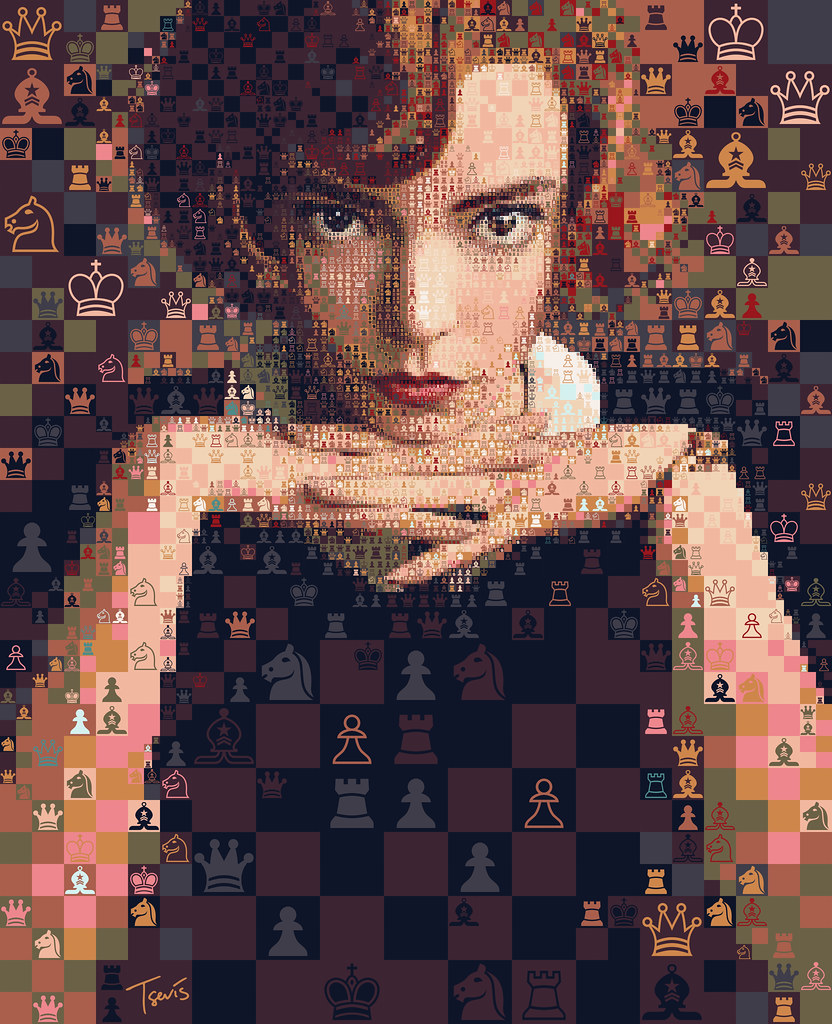Dear Dub: Representation and “Queens Gambit”
After its colossal success, it almost feels silly to introduce “Queen’s Gambit.” But for those who prefer to avoid the mainstream, “Queen’s Gambit” is a 2020 Netflix hit series following the story of a fictional character, Beth Harmon, as she rises to success in her chess career. The effects of this show hitting the popular streaming platform are still talked about. Just to give some numbers that are thrown around a lot: a 60 percent increase in U.S. sales of chess sets, a remarkable 215 percent surge in sales of chess sets and accessories in general and millions of new players joining the famous online chess platform Chess.com, among other impacts.
As a chess player myself, I felt seen by this show. Suddenly, people thought it was cool and not peculiar that I was into chess and that I had dedicated years of my youth to it. Suddenly, people around me were able to remember simple chess terms that they deemed impossible before. Suddenly, my chess stories weren’t boxed as Anja’s nerdy experiences, but they were given importance under the umbrella of “Queen’s Gambit.” As a woman, I was, of course, happy that the main character was female. Who doesn’t love some representation? However, as a woman, I didn’t necessarily feel seen.
Grandmaster Judit Polgar, arguably the best female chess player of all time, points out that none of her games made it into the show. While I am sure that all chess players appreciated seeing some sensical chess positions on TV for once, it is curious, to say the least, that all games included were between male players. Many of Polgar’s games have made history, but somehow, they did not meet the criteria to make it into the Netflix show that is supposed to empower women. Fide Master Alesa Melekhina, furthermore, shares how the show “glossed over a lot of female experience.” Considering the production and creative teams were all male, that does not come as a shock. Beth Harmon definitely does not get a smooth-sailing story, having to battle addiction and a tough childhood, but the series still falls short in showcasing the problems she faces purely for being a woman. Many female chess players, including myself, experience impostor syndrome, especially if one is having a bad tournament. When you are doing well, you are a good chess player; when you are doing bad, you are playing “women’s chess” (derogatory). Feeling out of place is just the tip of the iceberg, though, as being a successful young woman often also comes with attracting predators and bullies.
A lesser-known fact to the casual viewers of this show is that Grandmaster Nona Gaprindashvili filed a defamation case against the Netflix series. Gaprindashvili was the first woman to earn the Grandmaster title, and a character in “Queen’s Gambit” states that “she never faced men.” While the series has tried to defend itself by saying that they were referencing the structural barriers that women faced in the 1960s, the statement still heavily diminishes the fact that women have to face men outside the board as well. But even if we are talking about games only, the Georgian grandmaster has faced countless male opponents, some of them being world champions.
Now that we know some of the ways this show fails women, should we hate it? The short answer is no. The impact this show has had on both women and chess is still overwhelmingly positive. However, just because it has done some good does not mean that it should be excluded from conversations about what would have made it more accurate and more relatable to women, who are supposed to be the target audience (next to chess players). As a fan of the series, engaging with it from a more critical perspective didn’t ruin the enjoyment I had while watching it; rather, it just made me appreciate the women’s struggle to succeed in a male-dominated field even more. I hope the effect this article has on you is the same.



